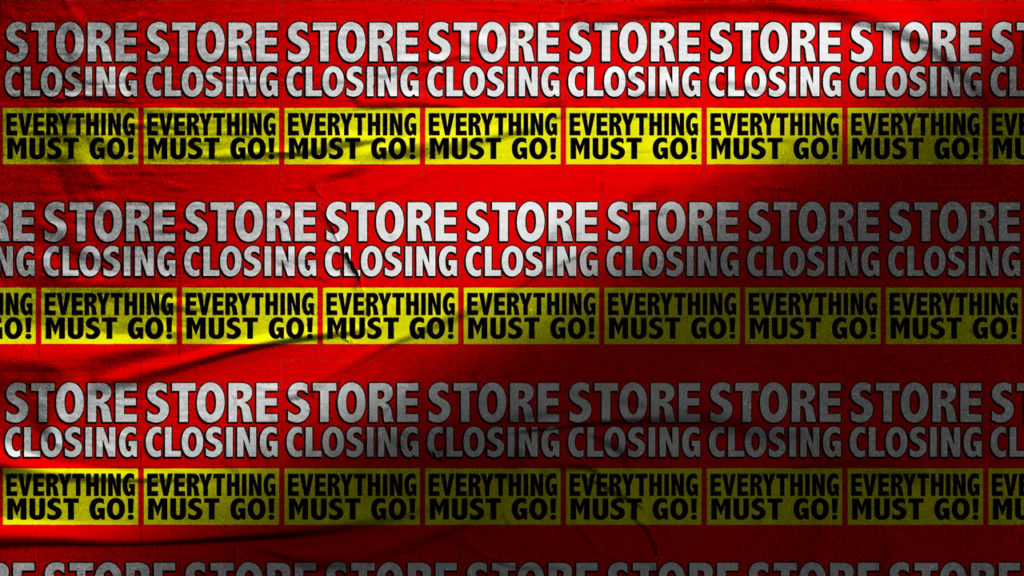According to the Interactive Advertising Bureau’s (IAB) 2021 Brand Disruption Report, the pandemic has accelerated the nation’s shift to a “storeless” direct brand economy five times faster than pre-pandemic rates.
Hastening this shift has been the rise of ecommerce, which now represents 23-25 percent of all retail commerce in the US, more than seven times what it was in 1995, according to IAB.
Research from McKinsey shows that nearly every consumer category will see 15-45 percent growth in permanent online shopping.
As a result, IAB expects brick-and-mortar store closures in the US to top 25,000 this year, nearly three times last year’s record number of closings. Among the major retailers that announced bankruptcy due to the pandemic include Neiman Marcus, Pier 1, Sur La Table, Brooks Brothers, J. Crew, J.C. Penney and Lord & Taylor.
“Faced with recession-minded consumers fearing out-of-home contact and hamstrung by compromised logistics and retail operations, retailers are using digital 1-to-1 channels, such as text and chat, to reach consumers, sell products and put products in shoppers’ hands,” Chris Bruderle, senior director, research & analytics, IAB, tells AList.
At thriving major retailers, same-day delivery is booming. As per IAB, Target’s same-day delivery grew 350 percent during COVID while its “buy online, pickup in store’ (BIPOS) offering grew 700 percent. Currently, 43 percent of the top 500 US retailers now offer BIPOS, up from seven percent last December.
Directly shoppable media such as livestreams, social commerce, virtual consultations and shoppable ad formats will be the fastest-growing ad categories in 2021, says IAB.
Many brands have already incorporated these formats into their strategy. Coty recently boosted conversions with an augmented reality (AR) beauty try-on Snapchat lens; TikTok announced a global partnership with Shopify; General Mills is making its brands’ sites more experience-driven and content-focused; and Esteé Lauder launched a voice-activated sampling campaign on Spotify to promote its new product.
Shoppable livestreams have also seen a surge in engagement during the pandemic. In July, Amazon launched Amazon Live for influencers as Facebook and Instagram rolled out live shopping features in August. IAB’s research shows that this year, sales from global livestreams will double to $120 billion. Last year, China’s major online shopping festival, Singles Day, alone generated $2.9 billion in sales.
“Being successful in livestreaming comes down to creating original, live video content that is entertaining, engaging and interactive, combined with seamless checkout functionality,” says Bruderle.
This will require brands to enable consumers to directly interact with sellers on the platform for Q&As and tutorials. To get off the ground quicker, Bruderle says brands can enlist companies like Livescale, Bambuser or Popshop Live that offer full-service, livestreaming capabilities.
IAB says that the introduction of shoppable formats will strengthen the free ad-supported streaming television (FAST) medium, which has seen significant growth during lockdowns. NBCUniversal’s Peacock reached nearly 22 million users, according to its Q3 performance update. Similarly, Xumo, recently acquired by Comcast, said that since January, its user base has ballooned 2.5 times to hit more than 24 million US monthly active users.
Digital acceleration coupled with government privacy regulations is fueling 60 percent of marketers to stress-invest in first-party data, a necessary ingredient for remaining competitive.
To operate as a data-first company while overall maintaining privacy compliance, Bruderle suggests putting mechanisms in place to capture customer consent to use their data for marketing purposes, then finding trustworthy data partners to supplement that data with user attributes around media behaviors and shopping intent.
Next, brands should find ways to activate that data such as through identity resolution partners, CRMs, CDPs and other data activation technologies. Lastly, he says they’ll need to find scale on the open web, which means finding publisher partners who have validated their own audiences and are thus able to match that back with the brand’s first-party data.
“Overall, retailers need to reimagine their current, offline shopping experiences into online shopping experiences, or to put it another way–turn “IRL” into “IVL,” says Bruderle.

